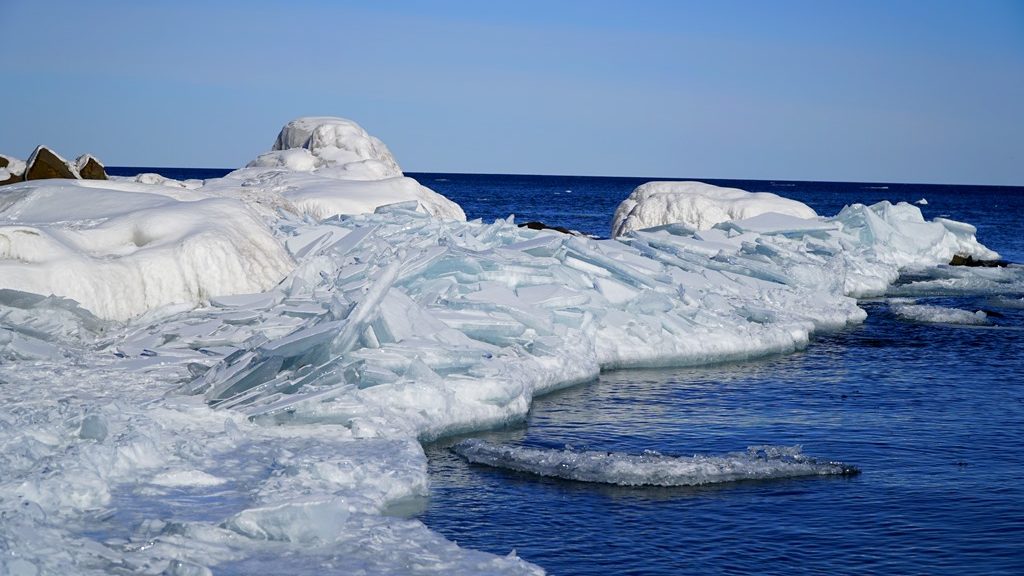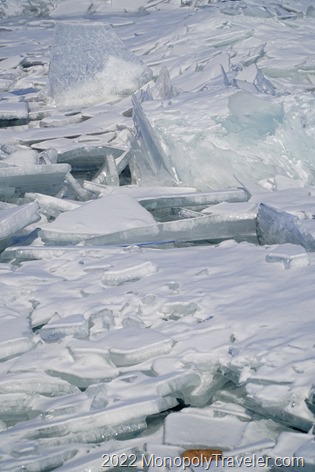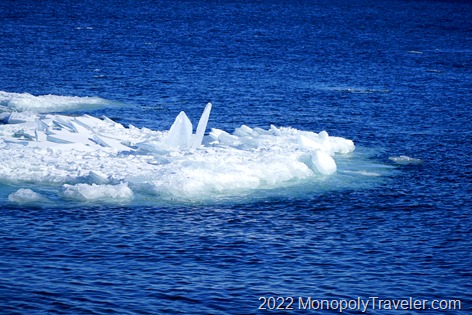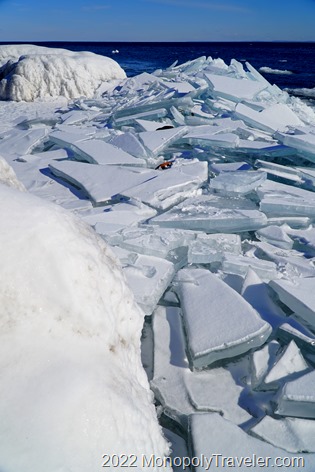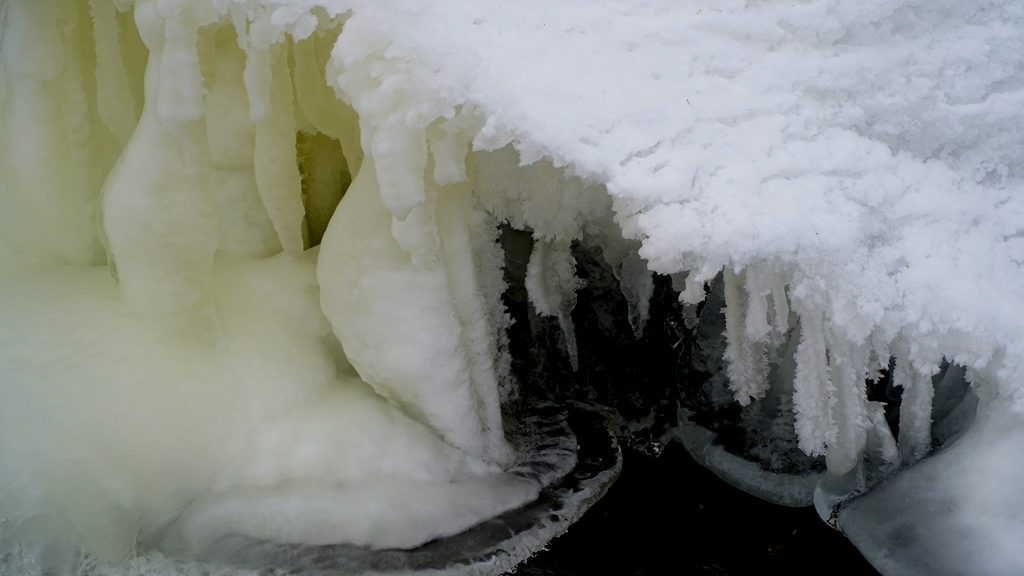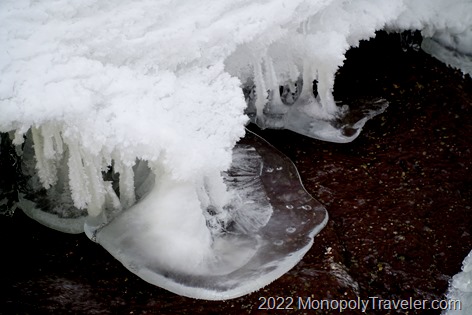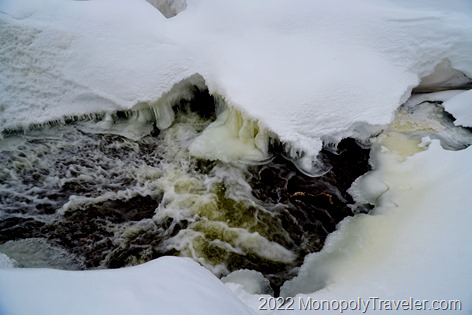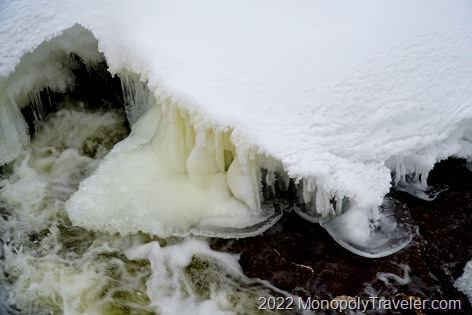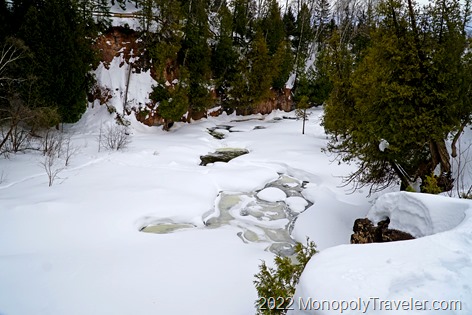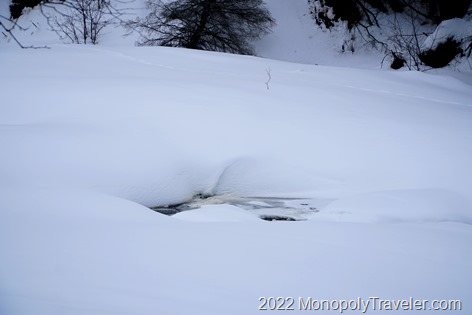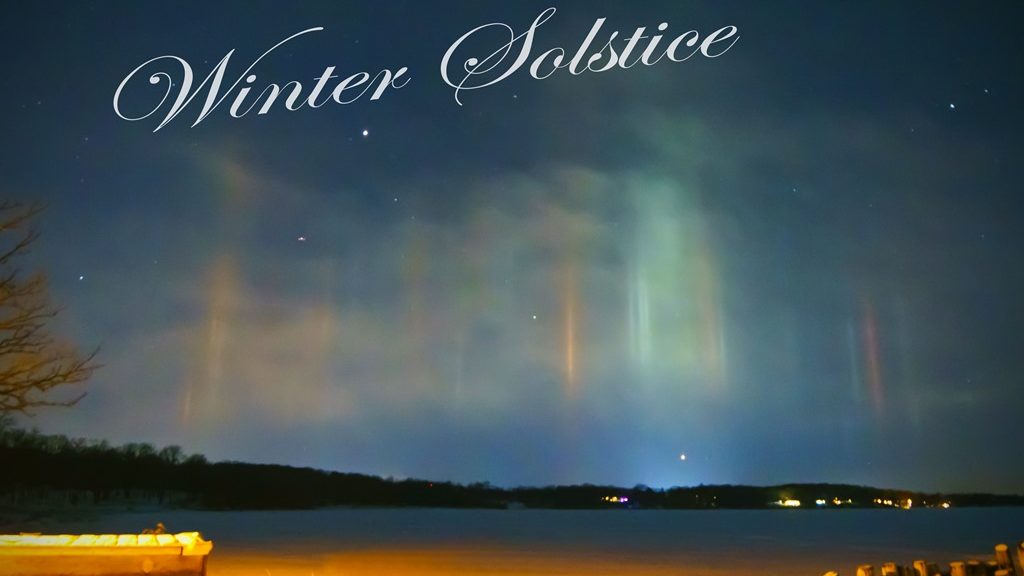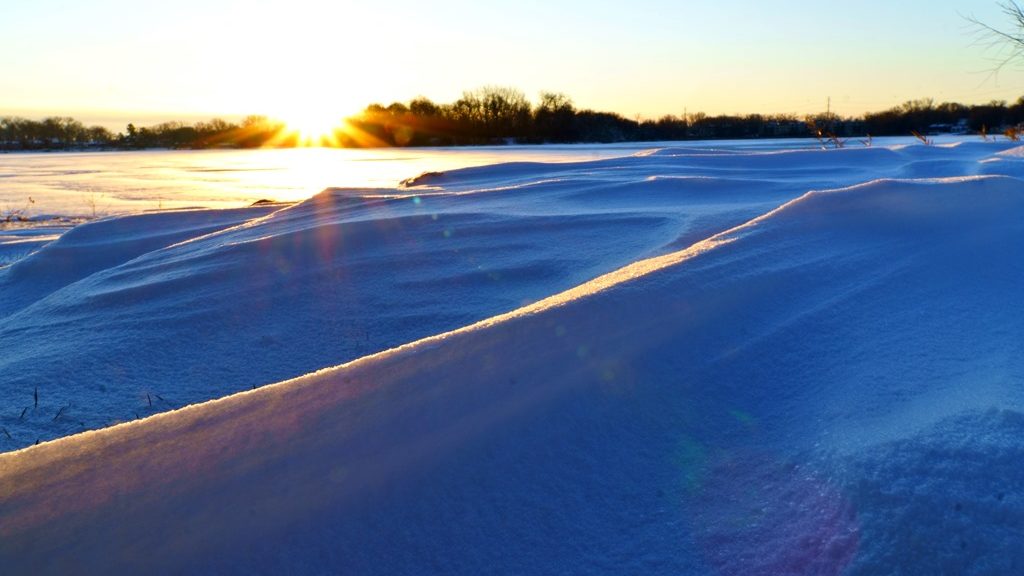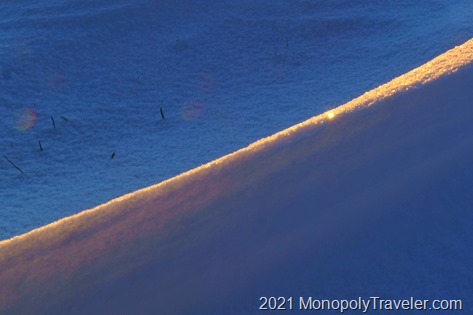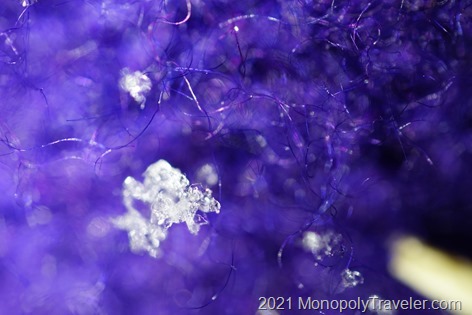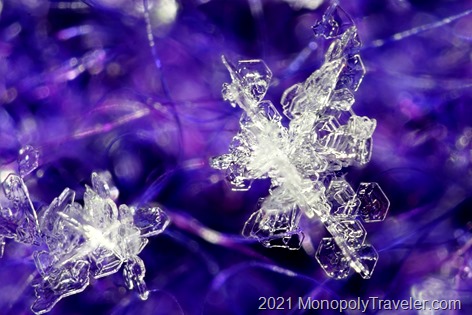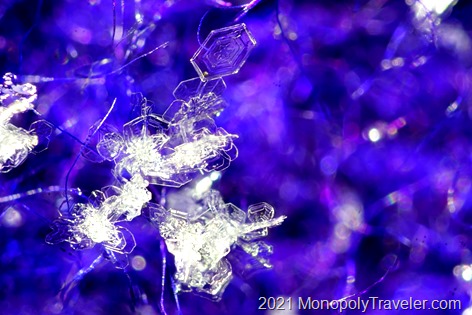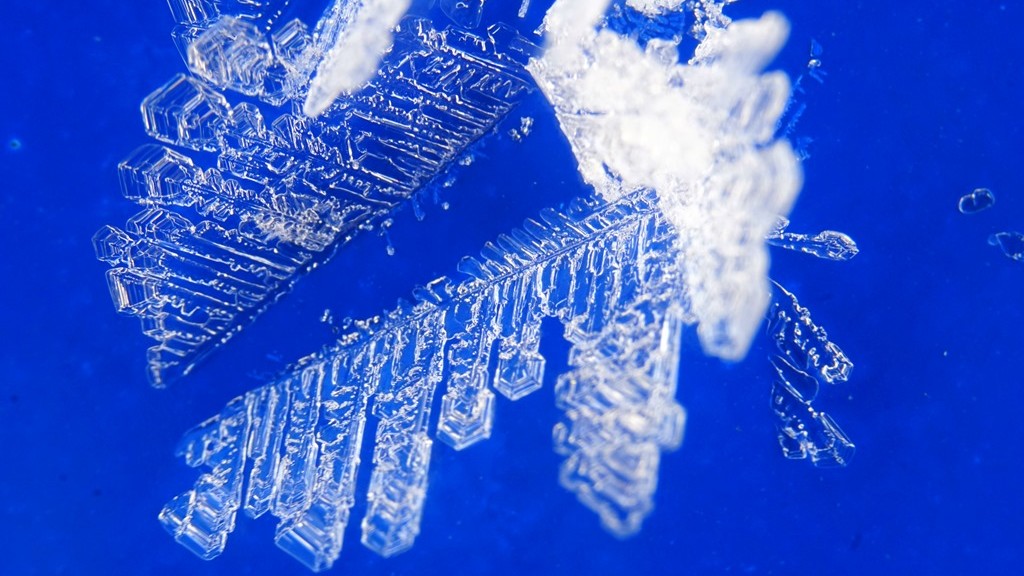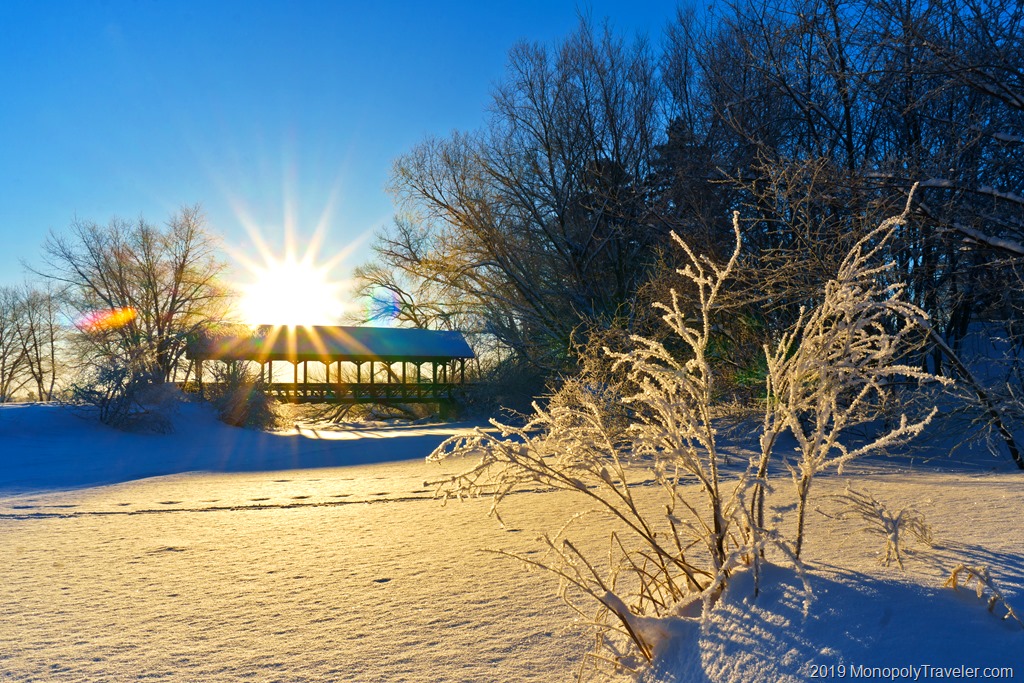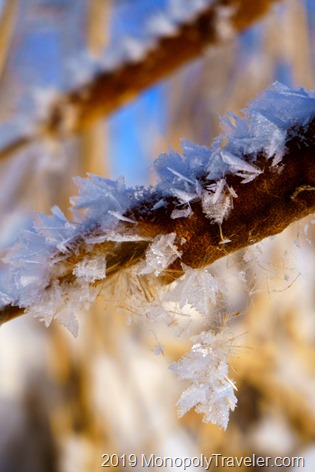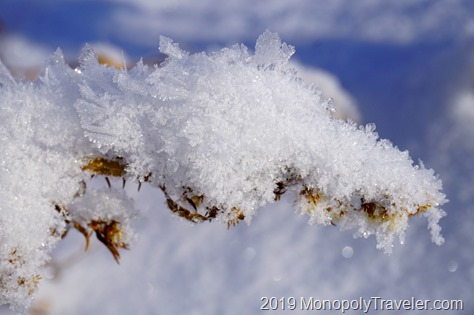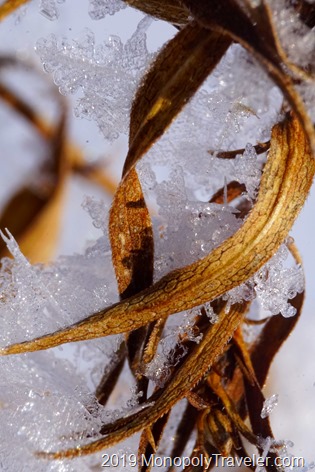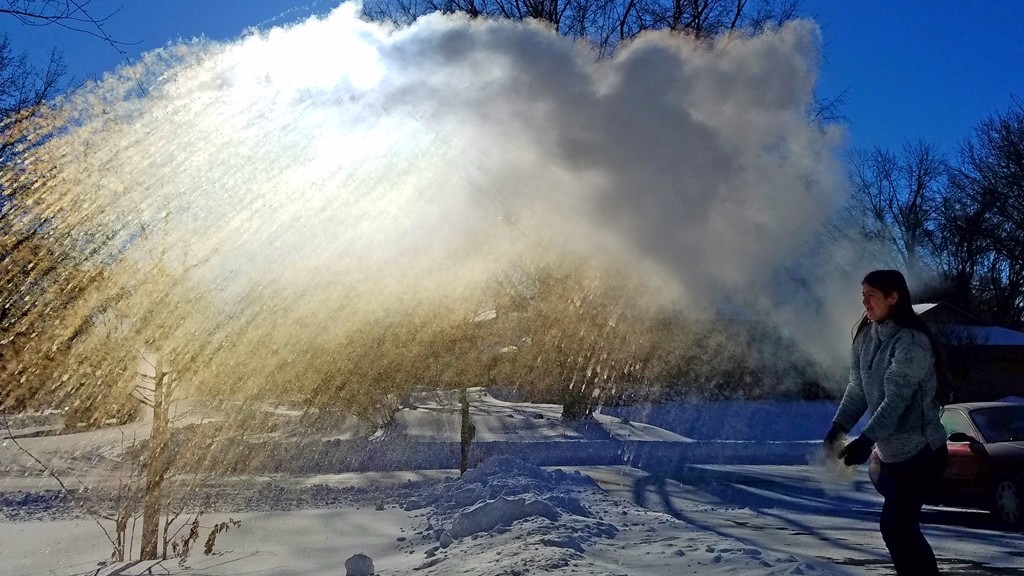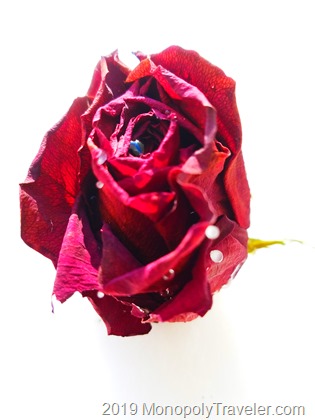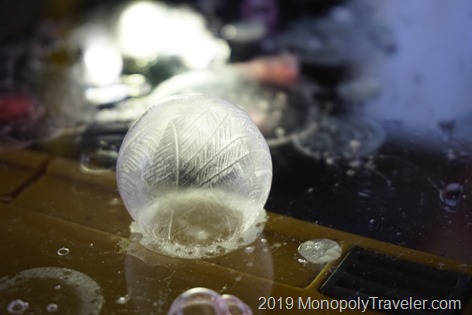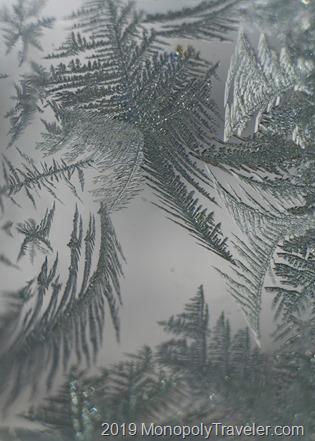A warm late winter afternoon on Minnesota’s North Shore highlighted what time of year it was. Spring would soon be here bringing warmer days. Ice along the shoreline of Lake Superior was beginning to break apart as evidenced by little islands made entirely of ice floating out to sea. Plates of ice littered the shoreline from previous days when it broke apart. Probably from a windy day creating waves on the big lake. These plates were stacked up in all different directions as the waves washed them up on top of each other. Overnight a light snow fell covering much of the rock and ice making up the shore line just north of Duluth. It’s really a beautiful winter scene!
The sun was high overhead on this bright afternoon showcasing each shard of ice. Each step must be carefully placed lest you break through this often fragile puzzle or slip and find yourself face to face with an unforgiving piece of granite coated in frozen water. Worse yet, you could land in this very cold body of water. It was a warm winter afternoon but that only means the temperature was just above freezing and a dip in the water could bring on hyperthermia. This is a good opportunity to use ice cleats to help secure each step allowing the user to spend more time enjoying each barge of ice as it floats by, slowly disintegrating.
Focusing more on the shoreline brings a myriad of shapes and sizes of ice plates thrown on top of one another. How did they get like this? Many of the boulders and beach were covered in ice. That is easier for me to figure out as the spray from each wave crashing into the shoreline ends in an eruption of water coating these rocks in water which quickly freezes.
The suns strength was not enough on this day to break through most of that ice protected by a thin layer of snow. Strolling along the shore brought a relaxing beautiful late winter view. But for only a short time as there was still the long drive back to the big city before heading to work the next day. A visit to the shores of Lake Superior is always a great way to spend a day no matter what season it is.

